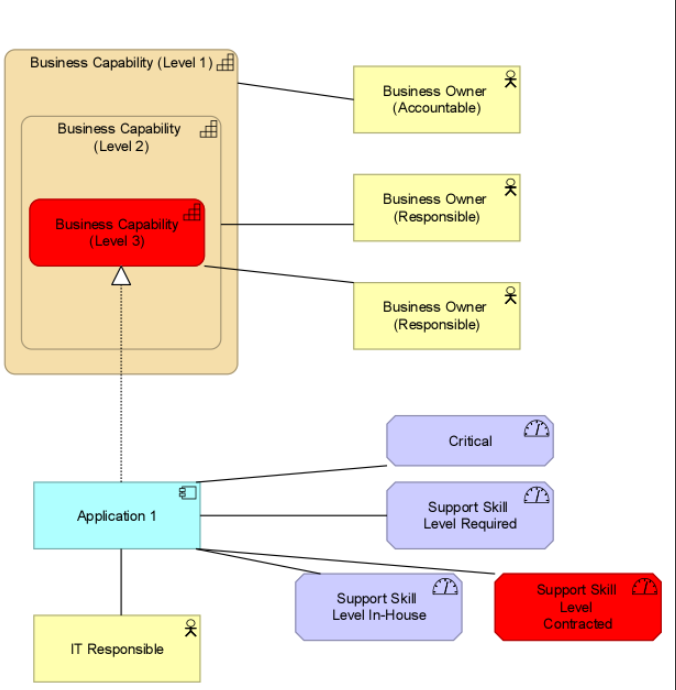In Part 1, we anonymized the narrative of one of our large manufacturing customers. Forced to protect the company in the face of the COVID-19 pandemic, the CEO decided to let all the contractors go and in Part 1 we presented the first of two possible scenarios as to how this might take place. In that initial scenario, the company fell in the trap of decisive, but hasty action.
In this Part 2, we’ll be looking at the second scenario. This time the company takes an extra look before it leaps and ensures measures are driven by evidence and factual insights into the enterprise. Let’s see how this scenario might play out.
Before starting to pull on the wires, find out what they are connected to
In this scenario, upon learning the news, the COO and the CIO get together and discuss the best way to go about it. They decide to co-opt the help of the enterprise architecture team since contractors, it turns out, represent a fairly heterogenous group with a hard-to-predict impact on the business should they be eliminated. Contractors are found in virtually every department of the company and they occupy the full range of positions from junior to senior and everything in the middle. What’s more, some very cutting-edge R&D work is being done in collaboration with domain experts who are hired – you guessed it – as contractors. Simply letting everyone go who might be hired under a ‘contractor’ tag might have serious unintended consequences
They take this up with the Head of EA and before long a battle plan is formulated. The solution they settle on is business capability mapping. This is an enterprise architecture technique that can help assess the risks associated with such blanket decisions and provide insights that assist in fine-tuning the outcomes in order to maximize cost reduction while also minimizing risk. How does this work?
Using business capability mapping to start connecting the dots (and critical dependencies)
Business capabilities describe “What” an organization does at its core. This differs from “How” things are done, “Where” they are done, or “Who” is doing them. And business capabilities not only make sense to the business, since they are stated in the language of the business, but they provide a connection point to business stakeholders. This is critical as these stakeholders have the power to make decisions and direct funding in order to change the enterprise and achieve targeted business outcomes, e.g. cost and risk reduction, which in our scenario would really come in handy.
So, the EA team gets to work identifying how the organization’s business capabilities are supported by lower level concepts like people, processes, applications and technologies. In other words, they start working on the “What” of the company, untangling the different components that come together to enable the “What” to take place. As architects grind away at this, it becomes increasingly clearer that a blanket measure would have caused significant and costly disruption to daily operations. A blanket contractor elimination plan would have evidently eliminated resources that are required to support the critical things that the organization does. This includes day-to-day processes, new product development, and so on.
And ensuring no critical capabilities are inadvertently put at risk
Fortunately, the systematic approach proposed by the Head of EA and approved by the COO and the CIO starts bearing fruit. Within a week’s time, the EA team already have findings related to
applications’ required support levels. By connecting the dots from each business capability to the underlying applications and then quickly assessing each application for a) criticality, b) degree of expertise required to support the application and c) degree of expertise comprised by related employee and contractor support team members, a clear landscape of cross-layer dependencies emerges. This delivers an invaluable perspective on which business capabilities would be at risk if the company eliminated contractors from supporting critical applications.
The dots that are connected from application to those in IT who are responsible for each application allows relevant stakeholders to quickly have a discussion around the criticality and support levels/staff requirements of each application. Furthermore, the connection between each business capability and the responsible business stakeholders makes it possible to address the capabilities that will be at risk, based on support member elimination where reduced support members will no longer possess sufficient enough skill to provide required support levels, hence increasing operational risk.
To present this important finding to the executives, the architects create a business capability model and make the Level-3 capabilities glow red if they rely on critical and unsupported applications. This makes conveying the information to the business stakeholders easy and straightforward, which fosters intelligent conversation with the business stakeholders on the topic of at-risk capabilities and the contractor elimination decision.
Here’s a depiction of the dots that can quickly be connected in order to achieve this level of guidance, discussion and risk avoidance:

Conclusion: Providing financial relief while protecting critical company capabilities
Business Capabilities allowed the EA team to connect the dots between business and supporting applications in this instance, highlighting areas of interest, need, concern. Naturally, with more time on their hands, their analysis could have been even more comprehensive and perhaps include processes etc.
However, what we presented here in the second scenario was a real actionable plan that could have made the difference between the fiasco presented in Part 1, and a genuinely reasonable lay-offs plan. In Part 1, business disruption is compounded by the move to let all contractors go whereas today we saw how a business outcome-oriented EA department was able to help formulate a plan that provided financial relief all the while safeguarding the enterprise’s key business capabilities. Better insights, better decision making – isn’t that ultimately the promise of enterprise architecture?
Thank you for making it to the end and remember to keep yourselves and your families indoors as much as possible and out of harm’s way!